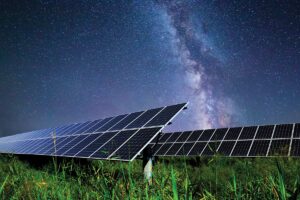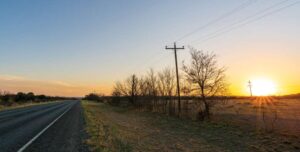The North American Electric Reliability Corporation (NERC) graded the nation’s grid on reliability. The report revealed the electric grid is highly reliable and continues to improve despite emerging challenges that may stress it in the coming years.
NERC’s “2022 State of Reliability” reports that the network of power plants, transmission lines and associated equipment (the bulk power system) repeatedly improved its performance over the last six years. That trend continues even with the challenges of adding more energy generated from renewable sources and facing extreme weather patterns.
The impact of severe weather events has underscored the need to plan for extreme scenarios related to resource adequacy and energy supply. Spurred by federal policies and market conditions, a drastic decline in available power generation resources has made complex electric systems more difficult to balance. As the nation’s energy mix evolves and flexible generation decreases, the risk of energy shortfalls is more likely.
When it comes to measuring grid reliability, the year 2021 saw improvement in both the year-over-year and five-year average.
To understand the NERC report, it helps to know the system that delivers electricity is described as the most complex machine in the world. The U.S. bulk power system is made up of more than 7,300 power plants and 160,000 miles of high-voltage power lines. This system is responsible for delivering most of the electricity to local utilities and their millions of miles of lower-voltage lines that connect homes and businesses to the electric grid.
The electricity that the bulk power system carries to you must be generated at the exact moment you flip the switch to use it. If that sounds like a mind-boggling job of high-tech coordination, it is, and the national grid does it every second of every day.
Despite that complexity and threats like severe weather and cyberattacks, NERC says the grid continues to perform in a highly reliable and resilient manner overall, with year-over-year improvement, demonstrating the success of actions taken by the energy industry.
Extreme weather
Given the frequency and intensity of severe weather that affects electric operations, NERC recommends a shift in focus from just making sure there’s ample energy supply to putting measures in place to withstand, adapt, protect against and recover from the impacts of extreme weather events.
Much of the NERC assessment focuses on the February 2021 event in Texas when six days of below-freezing temperatures left some people without power for days. NERC advises steps to provide more transmission connections across the country so power can be more easily shared.
Beefing up cybersecurity
Electric utilities repelled threats from what NERC called “increasingly bold cyber criminals.” NERC has established the Electricity Information Sharing and Analysis Center that gathers information about the latest cyber threats and advises utilities about safeguards.
Across the U.S., electric co-ops are working with national and local partners to fight cyber threats and add resiliency to establish relationships, provide tools, share resources and training information to continuously improve cyber protection.
Increased renewable energy
Renewable fuels like wind and solar are clean energy choices. One downside, they depend on whether the sun is shining or the wind is blowing. NERC calls them “variable energy resources” and sees a long-term solution in large-scale batteries that can store renewable energy so it can be available on demand.
Today’s energy landscape is wide-ranging and rapidly changing, yet the U.S. electric grid continues to keep power flowing. Illinois’ electric cooperatives work closely with grid operators to provide the dependable electricity you rely on.










